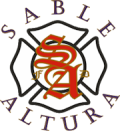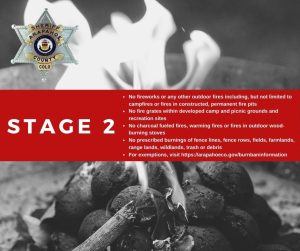FAQ
You've got questions!
We get asked a lot of questions by our community, friends, family, and future staff, regarding everything from the name “Sable Altura” Fire Rescue specifically, to a broad range throughout the fire and emergency medical services. On this FAQ page, we will try to answer some of the most frequently asked questions like, “What’s your EMS division about?”, “What’s the real difference between a volunteer firefighter and a career firefighter?”, and “Why is it so hard to get on a fire department?”
“Sable Altura” (actually legally “Sable-Altura”, but we don’t like the dash), refers to the original location of our fire agency when it was organized just prior to 1963. SAFR was originally formed in a community called “Altura”, and on Sable Boulevard (near E. Colfax Ave). There are still a few references in that area today of the “Altura” community with a school and some businesses still bearing the community name. With city annexations, we’re now located further east from that original location some 60 years ago and this makes our name seem a bit misplaced and confusing. Ironically our name was specific to a geographic location, but now doesn’t match that location at all anymore.
We do, and we really enjoy meeting our residents. We work for them, and we’re actually excited when they call us to stop by for a visit. Usually it’s preferred if people call ahead to arrange a visit so we can make sure that we’ve set aside a block of time to show you around. But if you’re driving by and you see us working around the house, feel free to stop to chat and take a look at your firehouse.
Our EMS Division was created for those who wanted to volunteer their time and talents, but weren’t interested in firefighting, or who don’t have the time to go through the Academy. Applications for the EMS Division are generally accepted year-round, and actually have more requirements for entry onto the department than for the Fire Academy. Applicants must already be a Colorado-certified EMT or Paramedic to qualify. They will then complete an Oral Board, Written Test, Physical Agility Test, and Background Check, and then complete a EMS Skills Assessment appropriate at their level of certification. Depending on whether there are any open Reserve EMS positions, they may be then be offered a volunteer position on the department. This can be an advantageous step to get on to the department before the next Academy is announced. Those already in the EMS Division have the right to enter into any limited Academy positions before recruiting for that Academy begins!
In a perfect world, there would be no other difference other than being paid to perform the job. A volunteer firefighter should be just as proficient, dependable, skilled, certified/licensed, and trained the same as any paid firefighter. The general public should not have any idea whether a firefighter they see is a paid or volunteer firefighter, nor do they deserve any less than the standards of professionalism from either. Realistically, volunteers have other jobs that limit the time they have to gain quicker proficiency or licensure in these skills. Our department believes in presenting a responder who is skilled, licensed, and proficient, and who strives to meet the standards of professionalism as a public service agency set forth by our predecessors in the Fire Service. As such, at Sable Altura it takes some longer to achieve this than others depending on the time that they have to give.
This really varies based on where you’re at, and the “cycles” of those coming and going. Generally though, people who are drawn to this kind of job don’t often want to leave it to do something else. There is a low turnover rate. In fact most of the job openings come because of retirements, or firefighters moving to another department. So the numbers of openings are pretty low compared to the number of applicants. Fire Departments also need to make sure that the people they hire will be able to do the job physically, mentally, and emotionally. They also need to assess whether a candidate is the “right fit” for their department at any given time. That’s sometimes a big factor! Each department has it’s own culture and what personalities seem to fit the best socially and professionally, and that can vary from department to department. We live with each other all of the time, so it’s important that we can get along well with each other. Some departments want people who are already trained and certified/licensed in certain areas, others prefer a candidate who they can teach from the ground up. There’s a lot of components here, and a lot of testing to assess these areas to see if someone has the right make up for a department at any given time.
Actually it is! Generally speaking, we refer to a fire “truck” as the one that has a ladder physically mounted to the vehicle. Although it’s becoming more common these days, usually “trucks” do not have a tank that carries water with it. That is the job of the “engine”. The fire “engine” carries water and is primarily responsible for putting water on the fire. “Engines” are required to have ladders on them, but they are not mounted to the vehicle. A truck has a general responsibility of getting firefighters near the fire. Not all fire departments have a specific need for trucks. All fire departments have engines.
When there’s a problem and you don’t know what to do, many people call the Fire Department to come help fix or stop the problem! Because of this, we do a lot more than just “fire” emergencies. Some fire departments have very specialized equipment and vehicles. Some are called “rescues” that have a lot of heavy equipment to lift, cut, and open things to get people out of them. Many fire departments have ambulances to help out with medical emergencies. Some have boats! Fire departments that work near water use all sizes of boats for rescue and firefighting! There are also special fire vehicles that are meant to fight fire off-road too! Everyone should visit their local FD to see what kind of equipment they have, and learn about what they do.
Well, it’s both (or either). A lot of times in the fire service, we name things based on their function. In this case our protective clothing is so named because it’s often kept near our “bunk” or racks. It’s also sometimes referred to as “turnout” gear because we put it on when we “turnout” or respond to a call. Generally a department’s tradition will dictate what they typically call it. Our department generally refers to it as “bunker” gear, but you’ll also still occasionally hear “turnouts” too.
We get this a lot actually! Our gear is made up of several components. First there’s our special boots, pants/trousers, jacket, special gloves, and a helmet. The “lowers” together can weigh around 25-30 pounds. The jacket is somewhere around 15 pounds or so, and a helmet is around 5 pounds. That’s around 40-50 pounds in clothing. Then there’s our air packs. These are generally around 30-35 pounds with the tank and the harness. So before we grab a tool or pull a hoseline, a firefighter is already carrying an extra 70-80 pounds on them. They may have to for several hours at a time!
Well…hot! This becomes a tough question because there are so many variables involved, and there are few “typical” fires. If solely a home fire that involves a single room and it’s contents, the inside temperatures can vary wildly. However, in order to answer your question we can say that the ceiling temperature in this kind of fire can reach 1200 degrees or higher, and it can get that hot there in just a few minutes! We say ceiling temperature, because it really is hotter at the top. Stay low!

